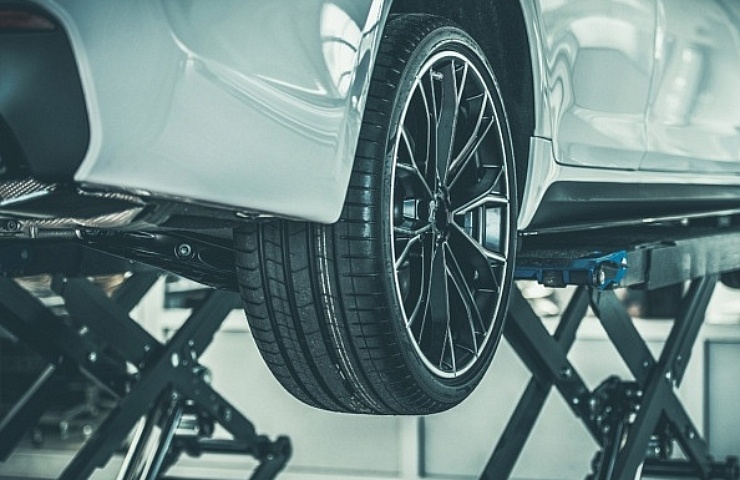Contents
Does it Matter Which Tire Goes Where?
It is critical to rotate the correct tire to the correct new position. By swapping a tire from the right to the left side of a vehicle, you are attempting to manage the wear of the tires so they wear evenly. On front-wheel drive vehicles, the two rear tires typically have different wear than the front tires, so moving them to the front while swapping sides is recommended. The front tires usually have similar wear patterns, so placing them on the rear wheels but on the same sides allows them to continue with an even wear pattern.
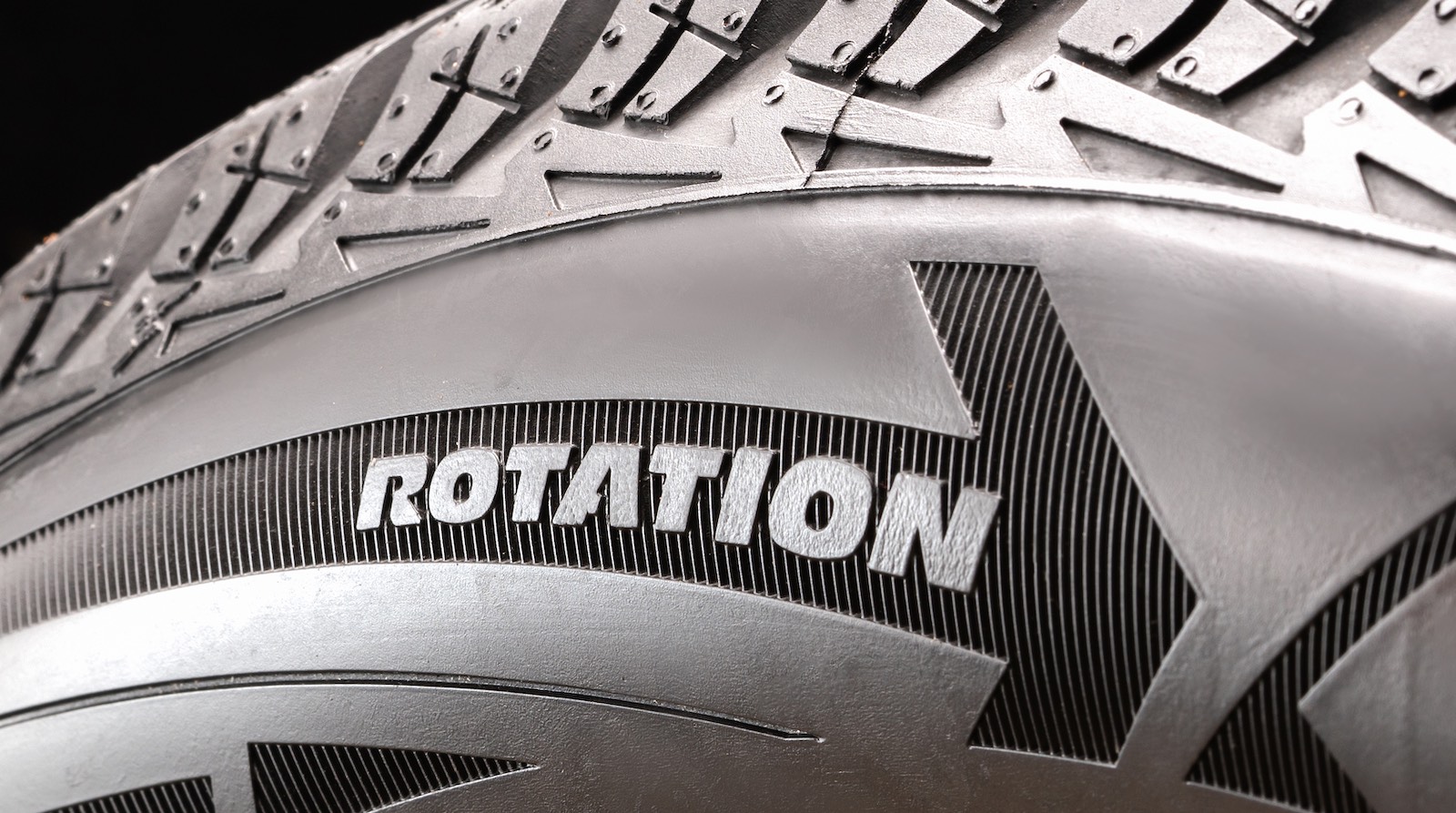
Directional tires have rotation symbols on the sidewall
Some tires are directional, designed to rotate forward in one direction. If you swap a directional tire from right to left, the tire will turn in the opposite direction. Manufacturers place an arrow or label on the tire to indicate the correct forward rotation of a directional tire.
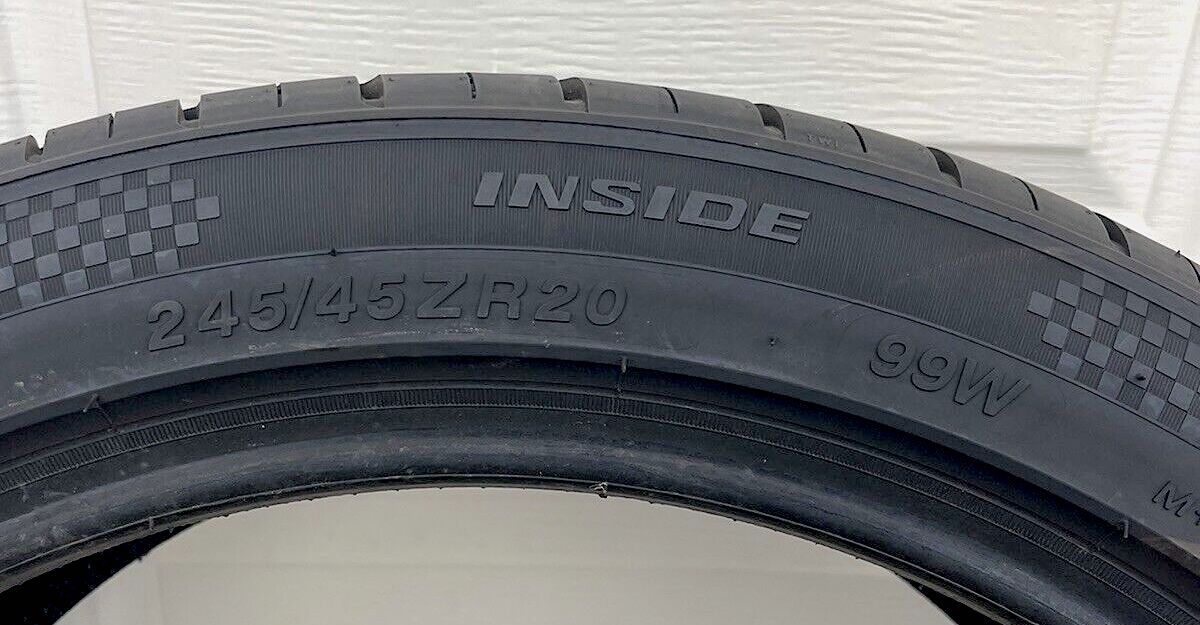
Directional tires may have markings on the inner sidewall
Some cars have staggered tires with smaller-sized tires up front and larger tires on the rear axle. If a vehicle has staggered tires, the tires can usually be swapped right to left but not front to back.
Why Do Tires Wear Differently?
Tires wear differently due to differences in the weight each tire bears, how severely the vehicle makes turns, and how often a the tires rub against the asphalt when parallel parking. Some driving routes have more right-hand turns than left. All these factors can result in different wear patterns on tires.
Should Spare Tires be Part of the Rotation Pattern?
Some vehicles have a small temporary spare, often called a donut. If your vehicle has a donut spare, it should not be part of a rotation pattern. If your vehicle has a full-size spare, you can include it in the rotation pattern so all five tires get comparable wear and use.
When you are ready to rotate your tires, here is a good article on the proper techniques. But let’s consider the possible tire rotation patterns.
Tire Rotation Patterns
Assuming all four tires can be rotated to any position, the owner’s manual could suggest one of these ***FOUR*** methods.
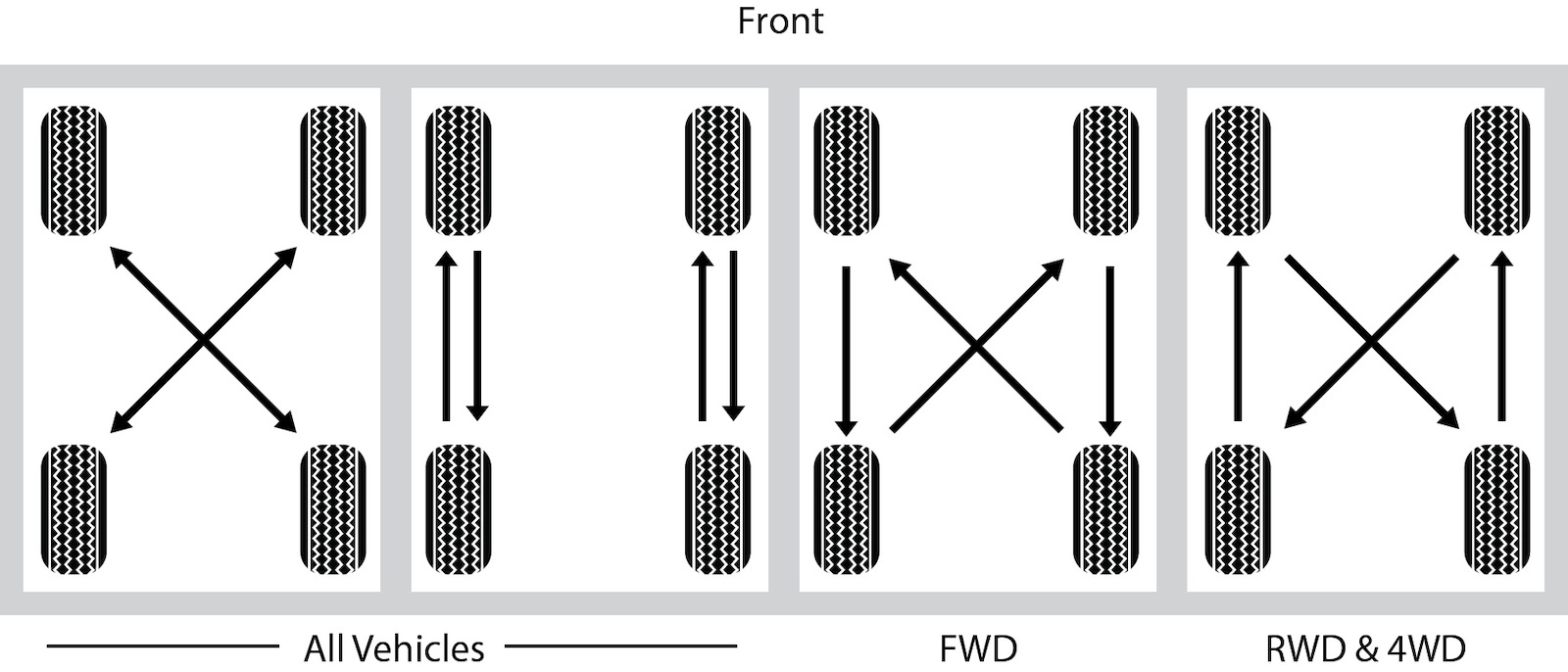
Basic tire rotation patterns for FWD, RWD, and AWD
- X-pattern. This tire rotation pattern is a simple crisscross. Each tire moves to the opposite side. The front tire goes to the rear, while the rear tires go to the front positions. This pattern is generally a compromise and is used instead of the other methods.
- Front-to-back. With this straight rotation pattern the tires stay on their side of the vehicle. Use this method if your vehicle is equipped with directional tires.
- Forward cross. This pattern is the opposite of the first pattern. The front tire goes directly onto the rear position without swapping sides. So the right rear moves to the left front position while the right rear tire goes to the left front spot. This pattern is often recommended for front-wheel drive vehicles.
- Rearward cross. In this rotation pattern, the rear tires go up to the front but stay on the same side. When swapping to the rear position, the front tires cross over, so the right front tire is on the left rear, and the left front tire is now on the right rear. This process is often used on four-wheel and rear-wheel drive vehicles.
The diagrams should help you follow the correct tire rotation pattern for your car.
Spare Tire Inclusion
Where the spare tire goes in a tire rotation is a critical decision, especially if the spare is brand new or has a slightly different diameter than the worn tires. This is especially critical with front-wheel drive vehicles. You risk damage to the drivetrain if the tire on one side of the axle is significantly bigger (newer) than the other tires. If you decide to include the spare tire in the rotation pattern, it should be done from the first rotation so that the difference in tire wear and diameter is minimal.
Putting the spare tire on the right rear is best unless the owners manual recommends otherwise. Whichever tire destined to go to the right rear position now becomes the spare tire.
Like a four-wheel tire rotation, there are the forward cross and rear cross patterns, with the spare moving to the right rear tire position.
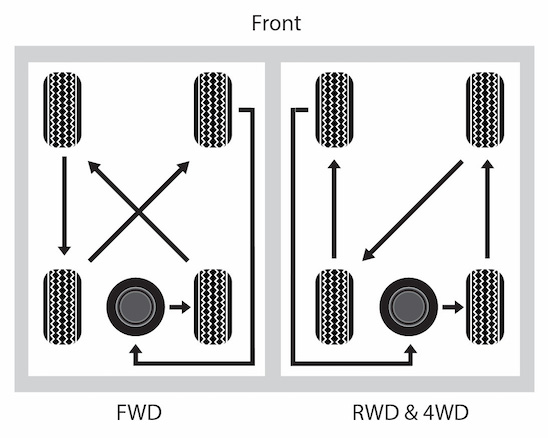
Tire rotation pattern with full size spare
You should consult the owner’s manual to see the recommended tire rotation pattern and frequency. Consistent and accurate tire rotation can save you money by prolonging the life of your tires.

